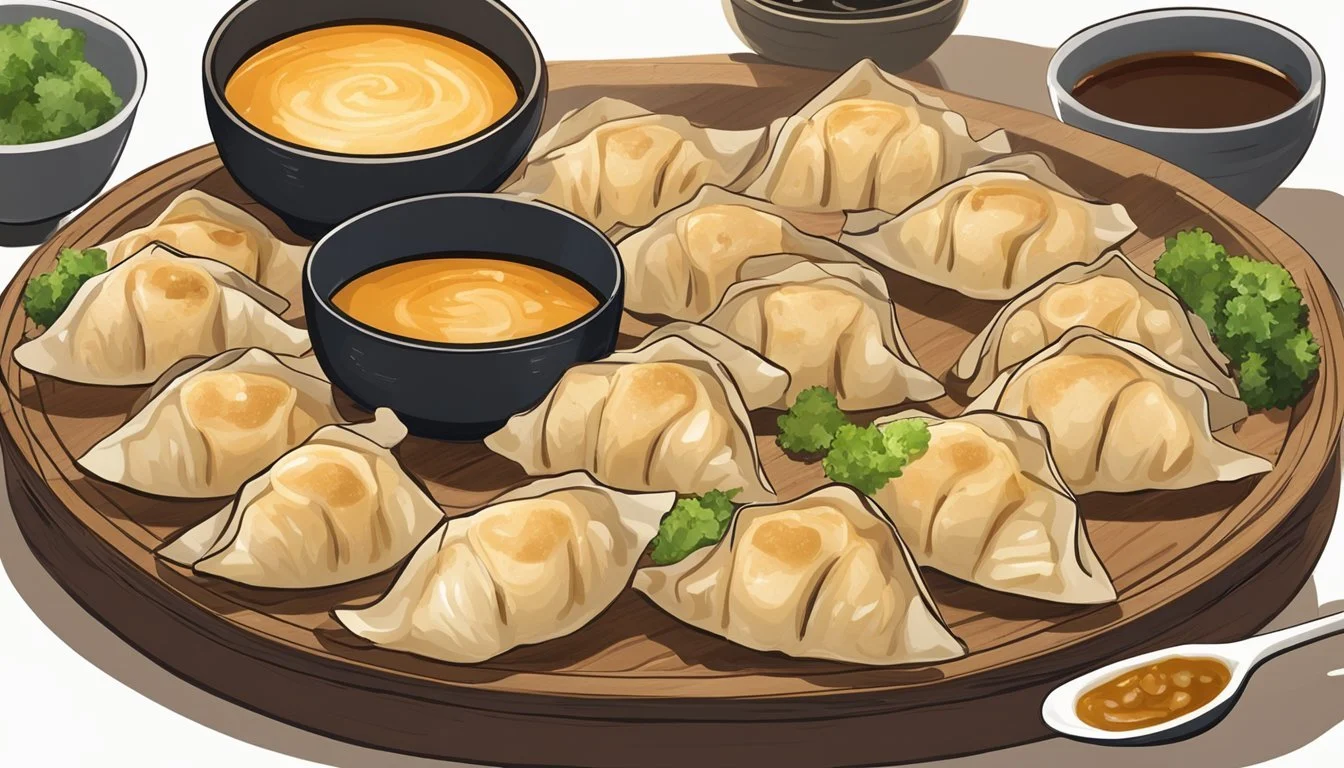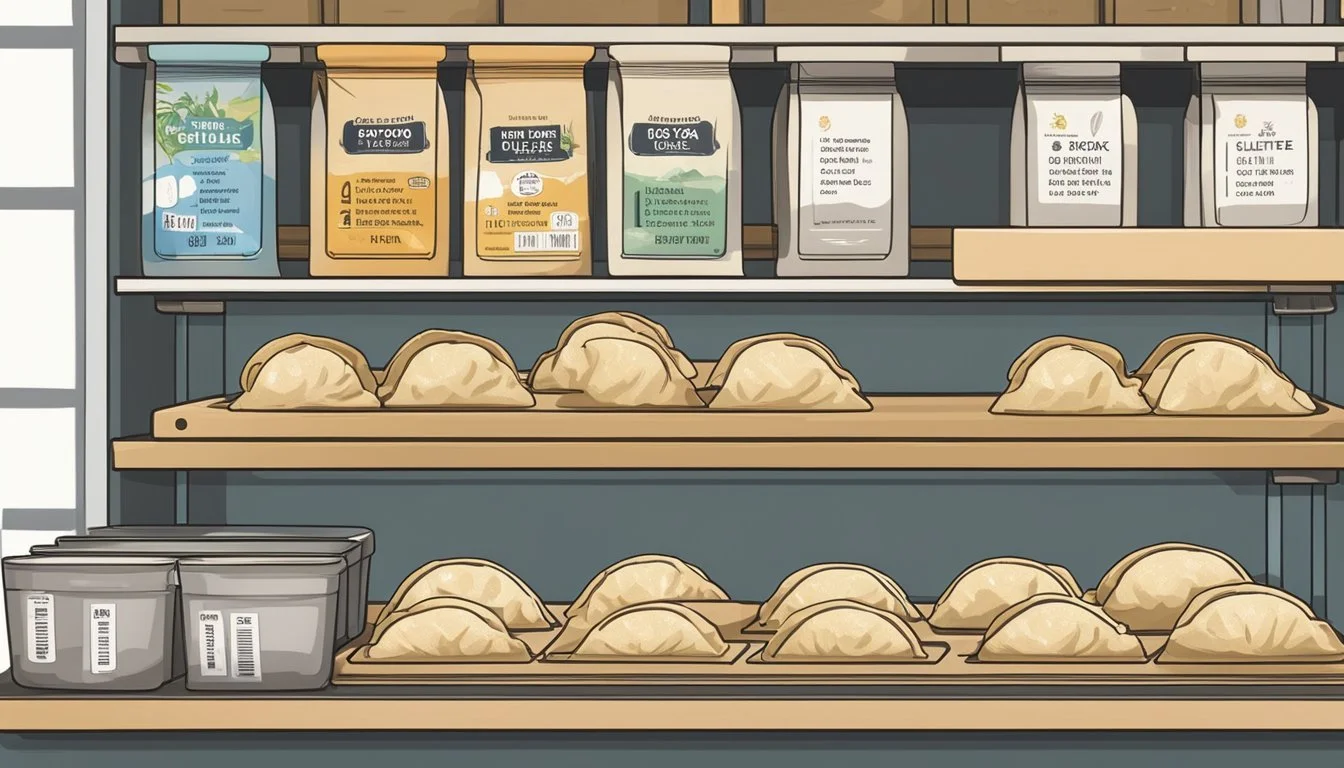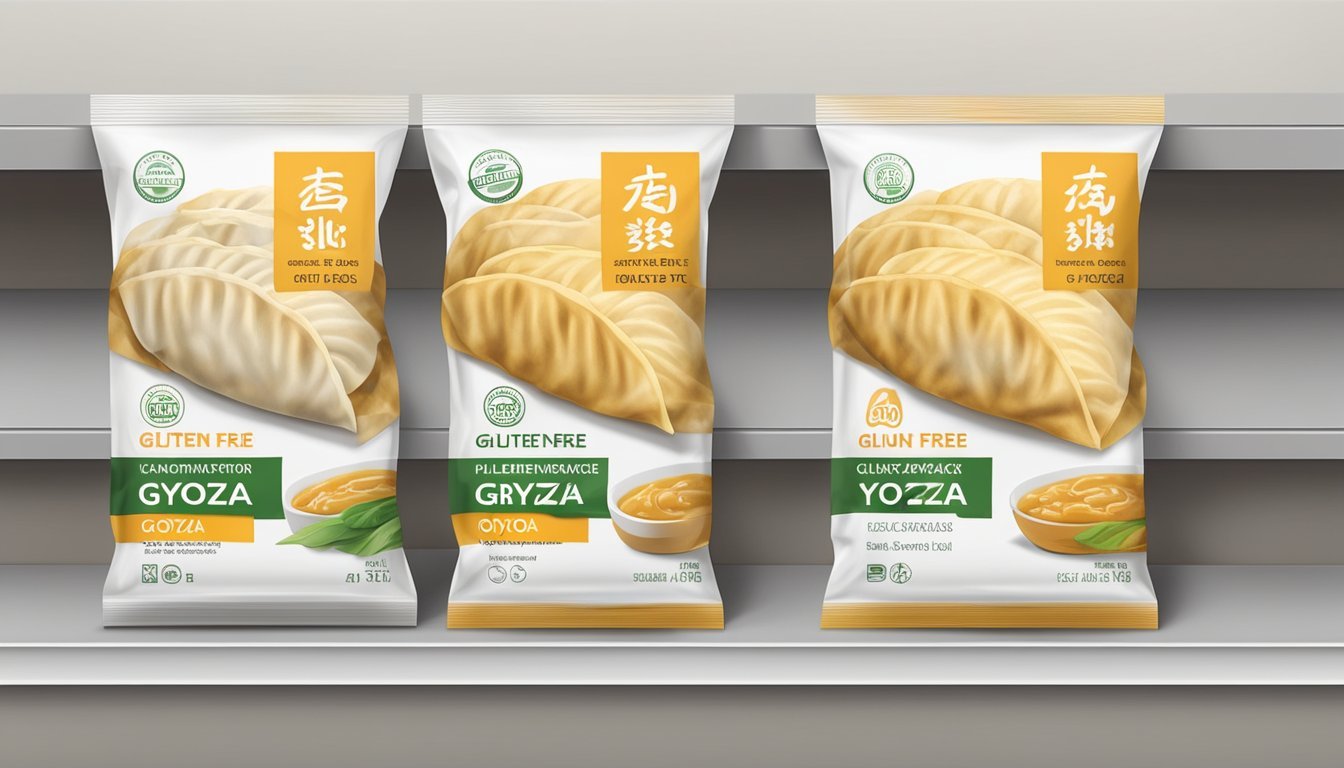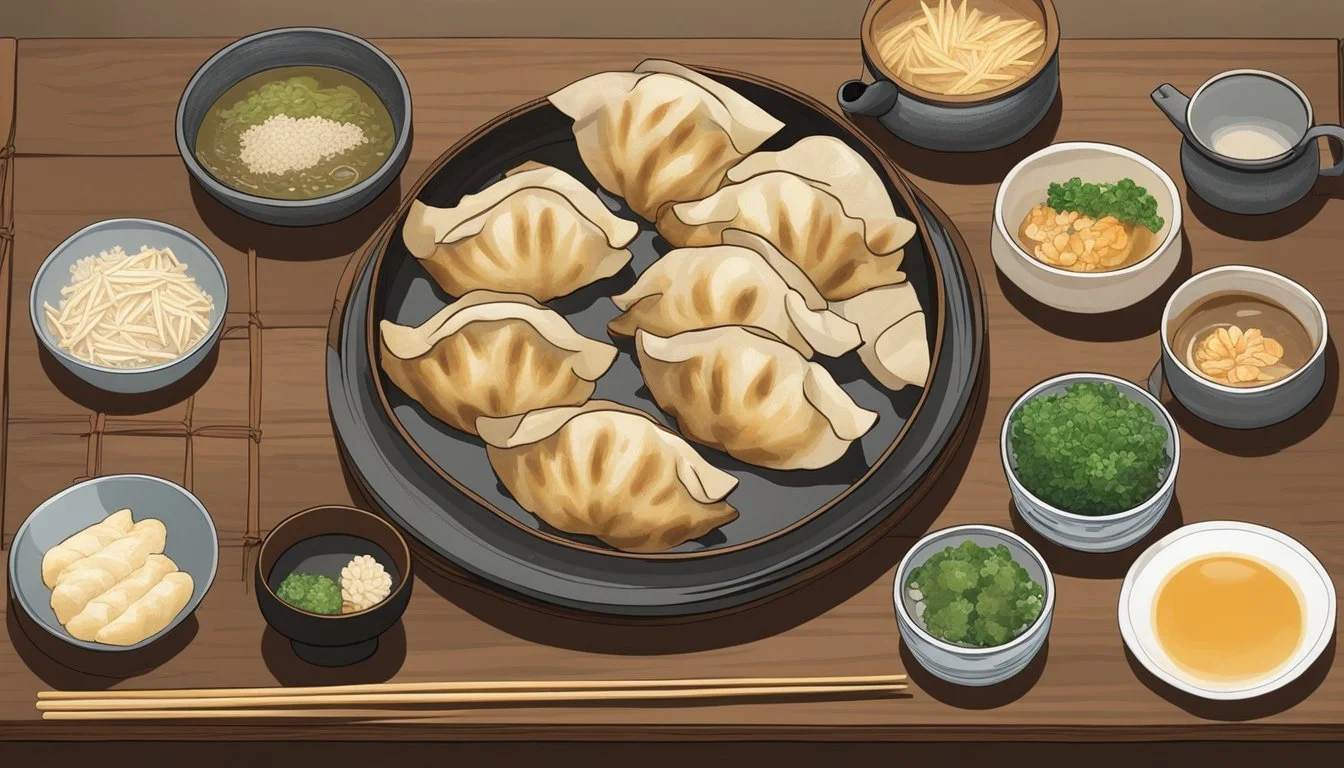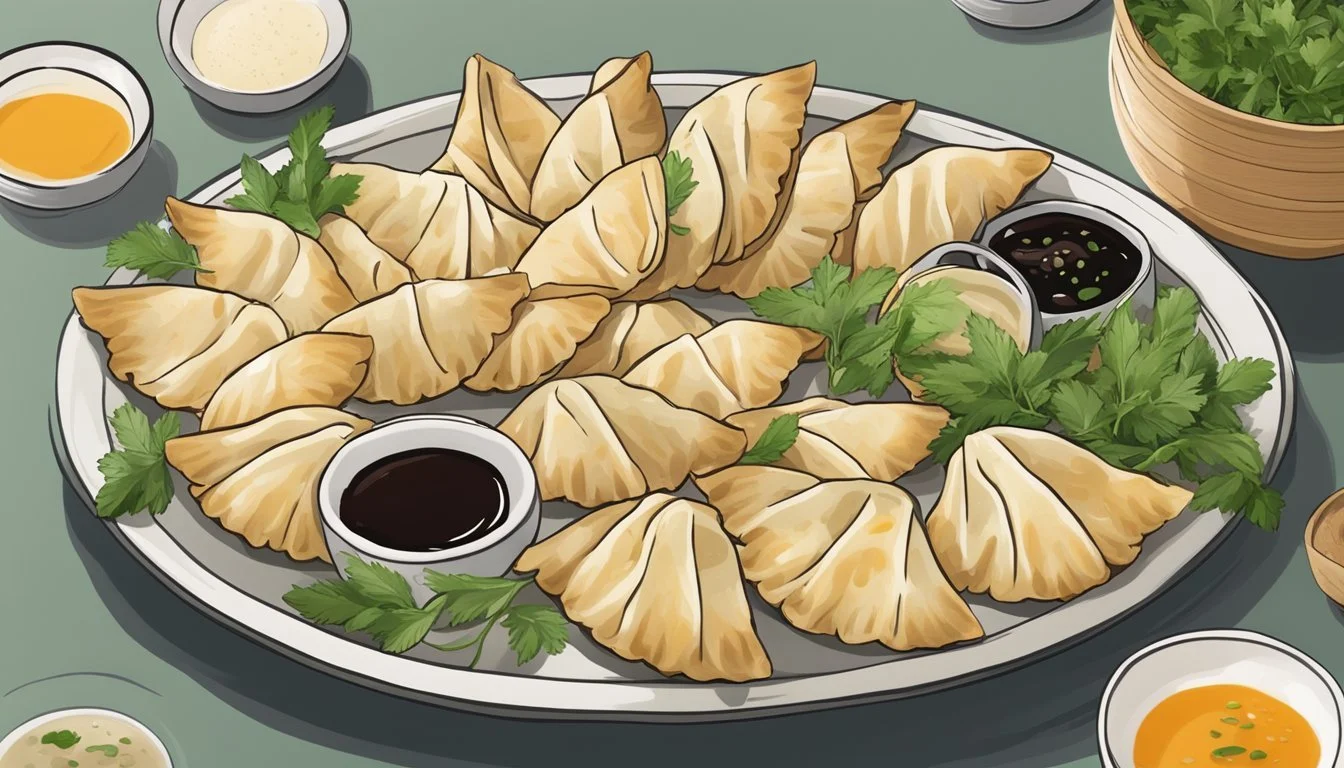How Long Does Gluten-Free Gyoza (Potstickers) Last?
Tips for Storage and Freshness
Food lovers and home cooks often wonder how long their homemade gluten-free gyoza will stay fresh. Typically, freshly cooked gluten-free gyoza lasts up to two days when stored in the refrigerator. If you need to keep them longer, freezing is a great option. Properly frozen gyoza can last for up to one month without losing quality.
Careful storage is key to maintaining their texture and flavor. Place leftover gyoza in an airtight container or wrap them tightly in plastic wrap before refrigerating or freezing. Reheating can be done by either steaming or pan-frying until they are heated through.
Knowing how long gluten-free gyoza lasts will help you plan your meals and reduce food waste. With these tips, you can enjoy delicious gyoza without worrying about spoilage.
Understanding Gluten-Free Gyoza
Gluten-free gyoza, also known as potstickers, are dumplings made without wheat flour. Instead, they often use a mix of rice flour, tapioca starch, and xanthan gum to create the dough. This combination provides a texture that's slightly different from traditional wheat-based gyoza wrappers but still enjoyable.
People with celiac disease, gluten intolerance, or gluten sensitivity can safely enjoy gluten-free gyoza. These conditions require strict avoidance of gluten, a protein found in wheat, barley, and rye.
The dough for gluten-free gyoza needs careful preparation. A typical recipe might call for chickpea flour and a binding agent like a flax egg to hold the ingredients together. This dough requires a bit more attention to achieve the right consistency and pliability.
When cooking gluten-free gyoza, it's essential to manage the steam and water to prevent them from sticking or becoming gummy. They should be cooked until the bottoms are golden brown and steamed long enough for the wrappers to be thoroughly cooked.
Not all gyoza fillings are gluten-free. Some traditional fillings may contain soy sauce or other ingredients with gluten. Always check the ingredients or use gluten-free alternatives to ensure the filling is safe for those with gluten issues.
Enjoying gluten-free gyoza allows those with dietary restrictions to savor the flavors of this popular dish without health concerns. By using the right ingredients and cooking techniques, gluten-free gyoza can be just as delicious and satisfying as their traditional counterparts.
Ingredients and Alternatives
Selecting the right ingredients and knowing the alternatives can make a significant difference in enhancing the taste and ensuring the dietary needs for gluten-free gyoza.
Choosing the Right Fillings
When preparing gluten-free gyoza, selecting fresh, high-quality fillings is crucial. Common choices include ground pork, chicken, shrimp, and tofu. Vegetables like cabbage, napa cabbage, green onions, carrots, and various mushrooms such as shiitake and oyster mushrooms can be excellent additions.
For a traditional twist, ground pork or chicken with minced garlic and grated ginger is a popular mix. Vegetarians can opt for a combination of tofu with vegetables. Mixing different vegetables can add texture and flavor diversity. Pre-cooking ingredients like mushrooms and cabbage helps release excess moisture, preventing soggy dumplings.
Sauces and Seasonings
Seasonings and sauces are pivotal in achieving a flavorful gyoza. Basic seasonings include soy sauce, gluten-free tamari, sesame oil, rice vinegar, mirin, sake, salt, pepper, and white pepper. These components balance the flavors, delivering a savory and slightly tangy taste.
For additional depth, combinations of minced garlic and grated ginger are often used. A traditional soy dipping sauce with a sprinkle of white pepper and a few drops of chili oil enhances the serving experience. For those who prefer a bit of sweetness, a touch of sugar can be added to the dipping sauce.
Healthy Cooking Oils
Cooking oils play an essential role in preparing gluten-free gyoza. Sesame oil adds a rich, nutty flavor, making it a preferred choice for frying. Peanut oil is another good alternative, known for its high smoke point and subtle flavor that doesn’t overpower the gyoza’s taste.
When opting for healthier options, using oils with balanced fat content is recommended. Vegetable oil is a versatile choice suitable for different cooking methods, including frying and steaming. Maintaining moderate oil temperature is crucial to achieve a crispy texture without burning.
Ensuring the use of minimal, high-quality oil contributes to a healthier dish, enhancing the natural flavors of the fillings and seasonings.
Preparing Gluten-Free Gyoza
Creating gluten-free gyoza involves precise steps to ensure the dough holds together and the dumplings cook evenly. This process includes making a dough with specific ingredients, assembling the dumplings, and employing proper cooking techniques for optimal texture and flavor.
Making the Dough
To make gluten-free gyoza dough, blend together rice flour, tapioca starch, and xanthan gum in a medium bowl. These ingredients provide the necessary elasticity and structure.
Add hot water gradually while mixing to form a smooth, pliable dough. Hot water helps the starches activate, giving the dough its stretchy quality. Knead the dough thoroughly until it is well-integrated and smooth. Cover the dough with a damp cloth to keep it from drying out while preparing the fillings and wrappers.
Assembling Dumplings
For assembling, roll out the dough on a lightly floured surface. Use a cookie cutter to create uniformly sized circles, which will be the gyoza wrappers.
Place a spoonful of filling, such as a vegetable filling or other desired mixtures, in the center of each wrapper. Fold the wrapper over the filling to form a half-moon shape, pressing the edges together to seal. Ensuring a tight seal prevents the filling from leaking during cooking.
Cooking Techniques
Heat a non-stick pan over medium-high heat and add a small amount of oil. Place the gyoza flat side down in the pan, allowing the bottoms to become crispy and golden for about 3 minutes.
Add water to the pan, immediately covering with a lid to steam the dumplings for another 3 minutes. This cooking method ensures the gyoza are tender and cooked through while maintaining crispy bottoms. Once the water has evaporated, remove the lid and let any remaining moisture evaporate before serving.
Storage and Shelf Life
Proper storage of gluten-free gyoza (potstickers) ensures they remain safe to eat and maintain their quality. This covers refrigeration and freezing methods, focusing on retaining texture and flavor.
Refrigeration
Gluten-free potstickers can be stored in the refrigerator for up to three days. Place them in an airtight container to keep moisture and contaminants out. It's important to wait until the potstickers are completely cool before sealing them, as residual heat can create condensation and lead to sogginess or quicker spoilage.
For those who prefer to make large batches, the potstickers can be prepared in advance and stored uncooked in the refrigerator. Similarly, ensure they are in a covered or sealed container. Cooking them within 48 hours will provide the best taste and texture.
Freezing and Thawing
Freezing gluten-free potstickers extends their shelf life up to two months. To freeze, arrange the potstickers in a single layer on a baking sheet and freeze them for an hour. Once solid, transfer them to a zip-top bag or an airtight container, removing as much air as possible to avoid freezer burn.
When ready to cook, there's no need to thaw them first. They can be cooked straight from the freezer, though this will adjust the cooking time slightly. Add an additional 2-3 minutes of steaming to ensure they are thoroughly heated and safe to eat. This method retains their texture and prevents them from becoming mushy.
Health Considerations
Individuals with celiac disease must strictly avoid gluten. For them, consuming gluten can lead to severe health issues, including intestinal damage.
Gluten intolerance or gluten sensitivity also necessitates avoiding gluten, though the reaction may be less severe than in celiac disease. Symptoms include bloating, diarrhea, and fatigue.
When selecting gluten-free gyoza, it's critical to check labels for gluten cross-contamination. Cross-contamination can occur during manufacturing if the facility processes gluten-containing products.
For those with celiac disease or gluten intolerance, even a small amount of gluten can trigger symptoms. Thus, ensuring that gyoza is certified gluten-free is essential for maintaining health.
Gyoza can be a nutritious addition to a gluten-free diet. They often contain vegetables and lean proteins. However, the nutritional value can vary based on ingredients and cooking methods, such as frying versus steaming.
Ingredients in gluten-free gyoza may include rice flour or other non-gluten flours, and it's important to verify that all components used are gluten-free.
By following safe practices and selecting the right products, individuals with gluten-related health issues can enjoy gluten-free gyoza without compromising their wellbeing.
Market Varieties and Label Understanding
Gluten-free gyoza (potstickers) are available in various brands and stores, each offering different flavors and ingredients. It's crucial to understand product labeling and certifications to ensure the food meets gluten-free and dietary standards.
Recognizing Certified Gluten-Free Products
When looking for gluten-free potstickers, checking for certifications on product labels is essential. Certified gluten-free labels, such as those from the Gluten-Free Certification Organization (GFCO), provide assurance that the product contains less than 20 parts per million (ppm) of gluten.
Brands like Feel Good Foods and Earth Grown offer certified options that are both gluten-free and vegan. For example, Feel Good Foods provides potstickers available at various retailers, while Earth Grown potstickers can be found at Aldi stores. Consumers should check if the store stocks these items before purchasing.
Additionally, labels may list ingredients like gluten-free tamari as an alternative to soy sauce, maintaining traditional flavors without gluten. This helps in identifying safe and authentic alternatives crafted for those with dietary restrictions. Always review the ingredient list and certifications to make informed choices.
Culinary Culture and History
Culinary traditions play a crucial role in shaping the history and methods of preparing gyoza and potstickers. These traditional Asian dumplings have deep roots in Chinese, Japanese, and Korean cuisines, each bringing unique spin and flavor profiles.
Traditional Potstickers and Gyoza Origins
Potstickers, also known as jiaozi in China, trace their origins back to the Song dynasty (960 to 1280 A.D.). These dumplings were crafted with meticulous care and often enjoyed during festivals and family gatherings. The traditional filling usually includes a mix of pork, cabbage, and seasoning.
Japanese gyoza, an adaptation of the Chinese jiaozi, became popular post-World War II. Japanese soldiers returning from Manchuria brought back these delicious dumplings. Gyoza fillings often include garlic, pork, and a delicate wrapper that is pan-fried on one side for a crispy texture.
Korean dumplings, known as mandu, also share similarities with their Chinese and Japanese counterparts. Common fillings include beef, pork, and kimchi, providing a spicy twist. Each type of dumpling holds significant cultural value, showcasing the region's unique ingredients and culinary techniques.
Pairing and Serving Suggestions
When serving gluten-free gyoza (potstickers), it's important to consider the accompanying dishes and dips to enhance the flavors.
Complementary Dishes
Rice and Noodles
Steamed jasmine or basmati rice offers a neutral base that complements the rich flavors of gyoza. For a more elaborate meal, serve with stir-fried or plain rice noodles, which can soak up accompanying sauces.
Fresh Vegetables
A side of steamed or sautéed vegetables like broccoli, bok choy, or snap peas provides a light contrast to the savory potstickers.
Dipping Sauce
A mix of soy sauce, vinegar, and a touch of fresh ginger creates a classic dipping sauce. For a spicier kick, add chili oil or sriracha. Ensure to use gluten-free soy sauce for a completely gluten-free experience.
Meat Alternatives
To expand the menu variety, consider serving a dish like pierogi or meat-filled dumplings, which can be a filling and satisfying complement.

